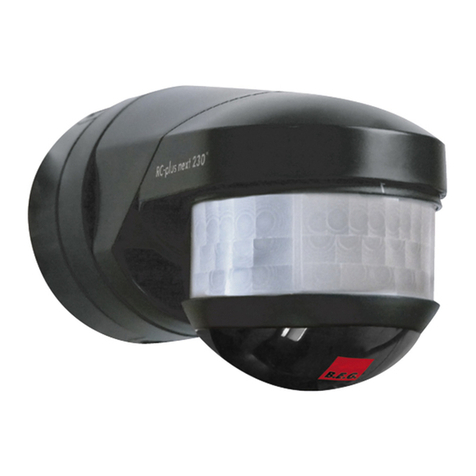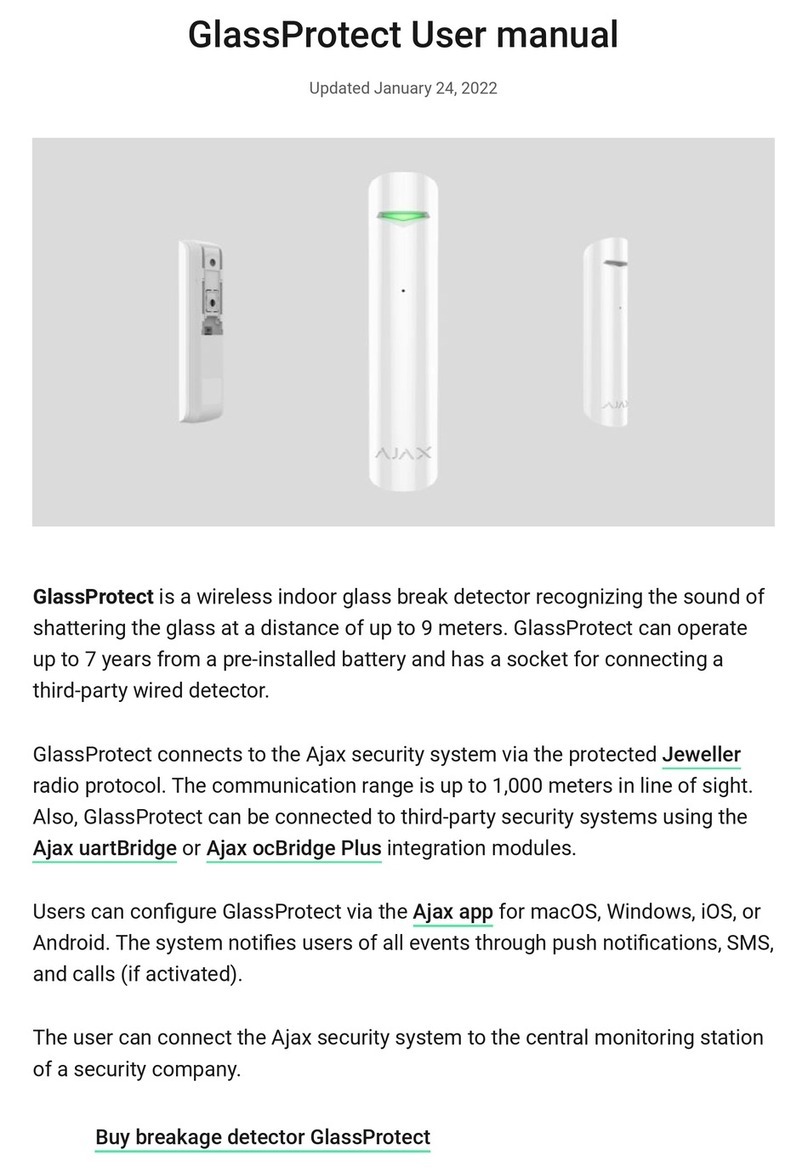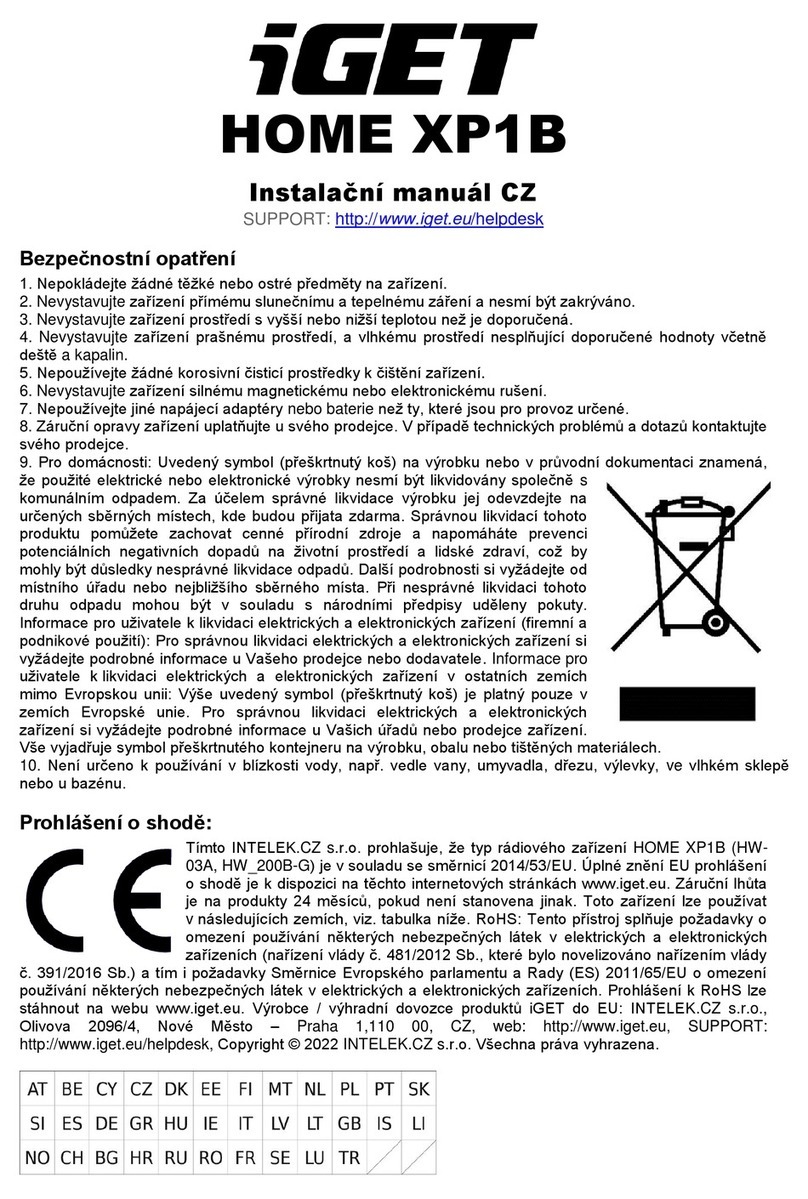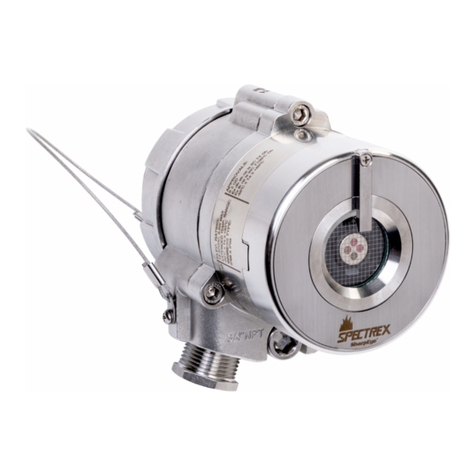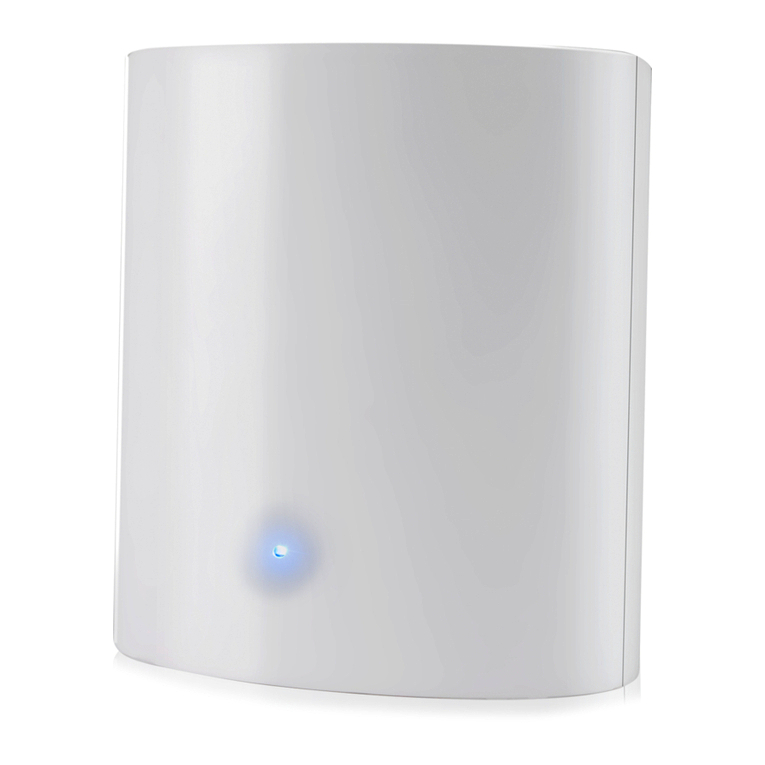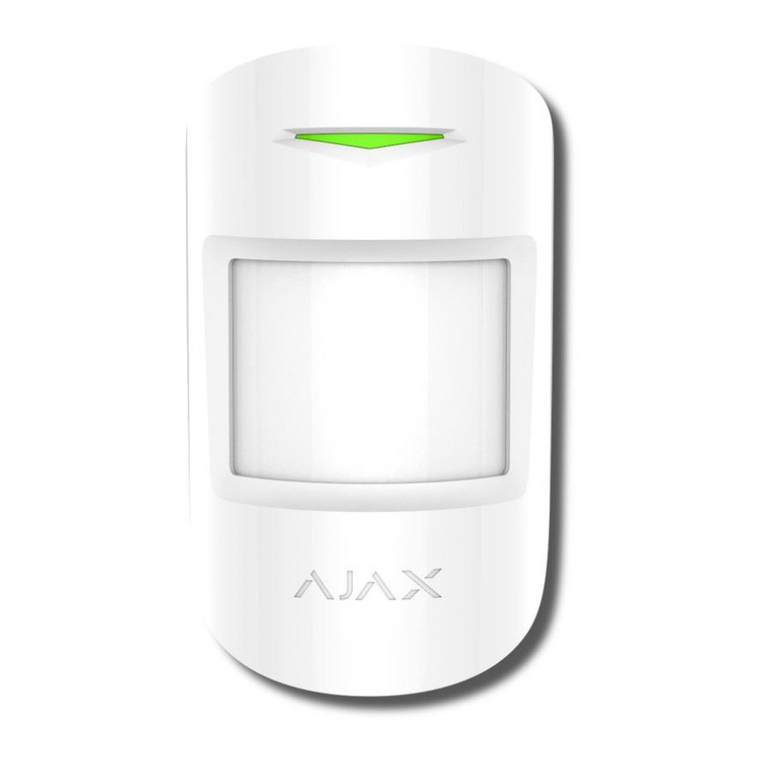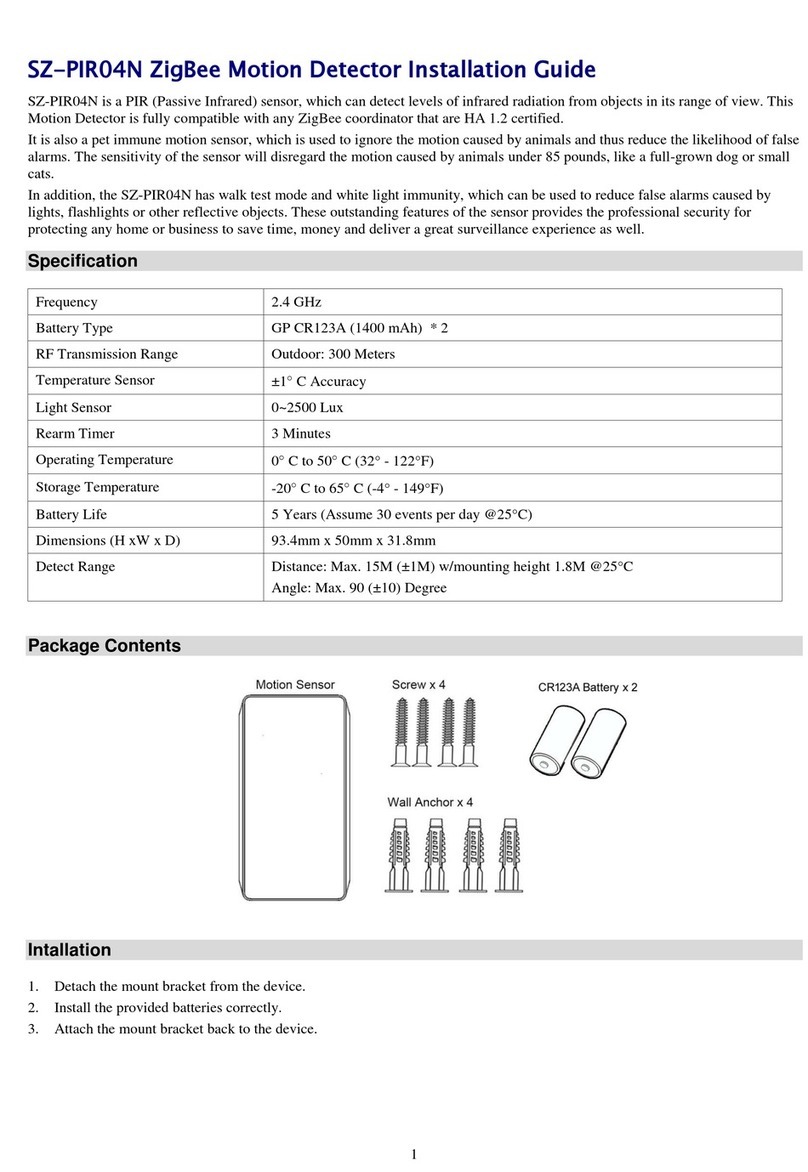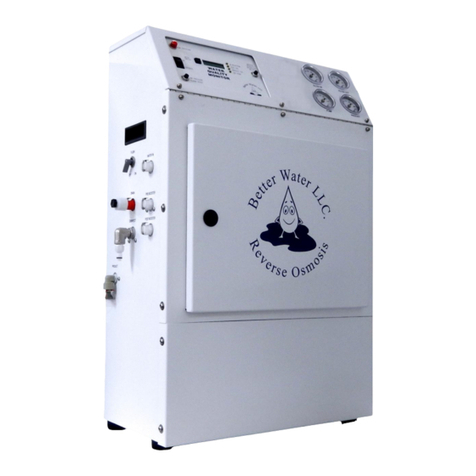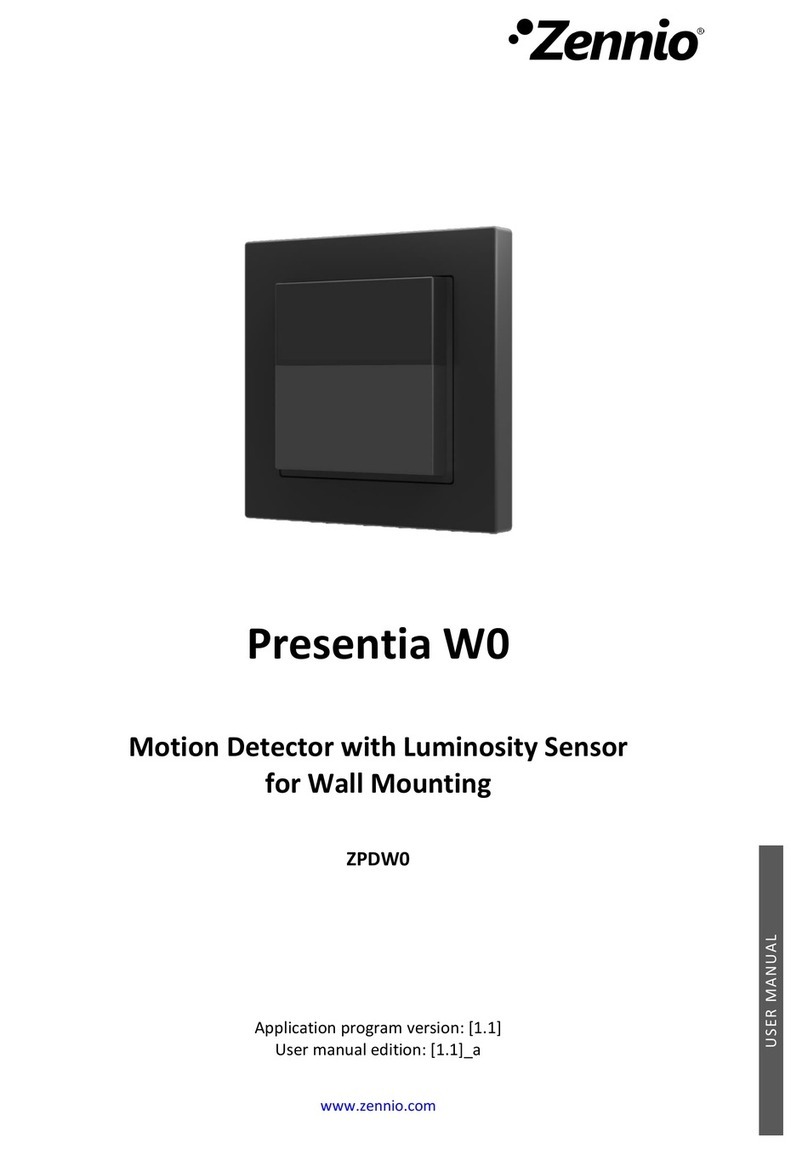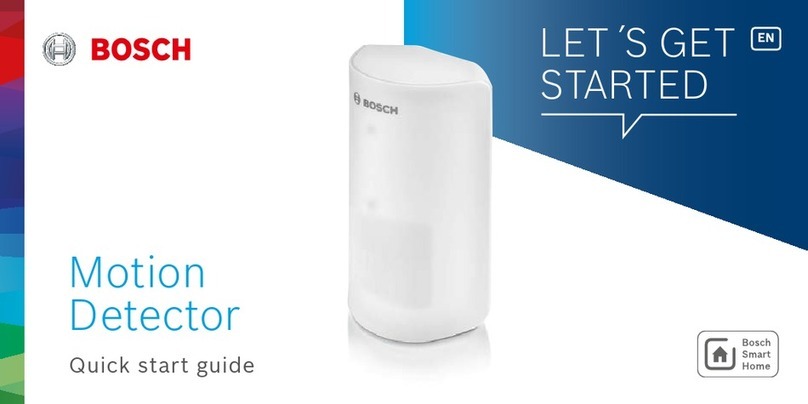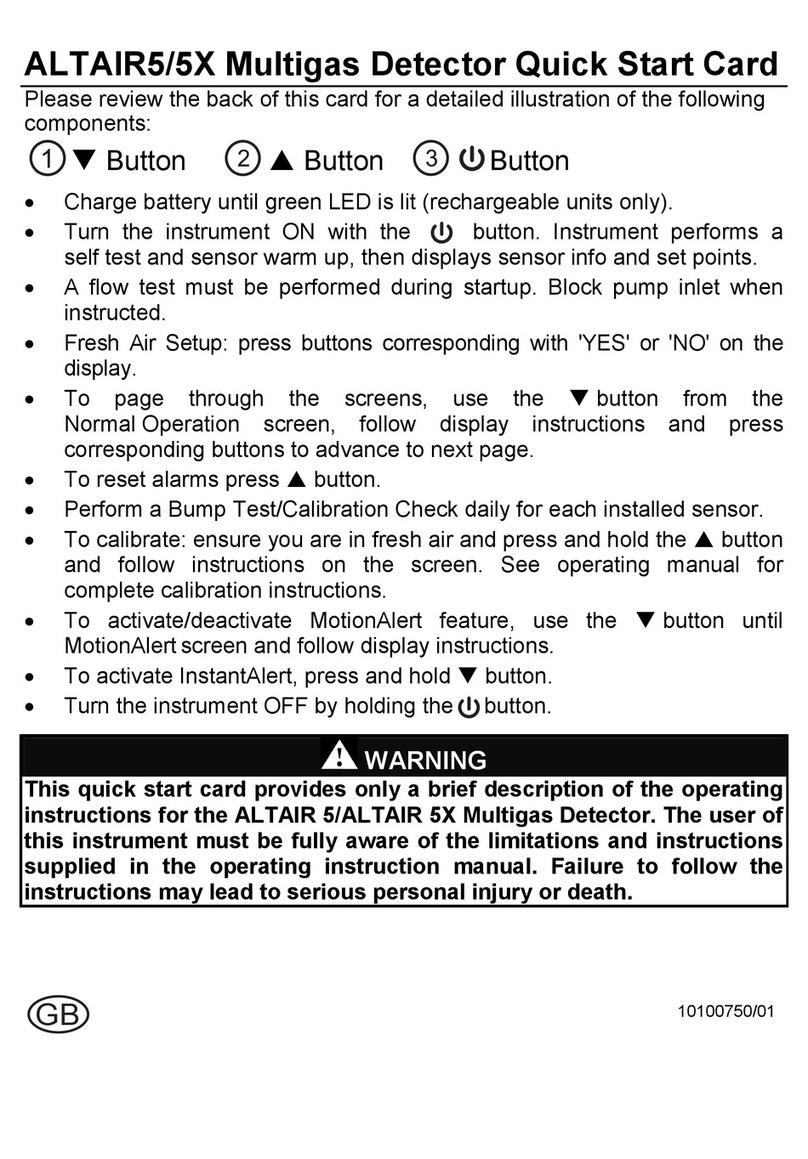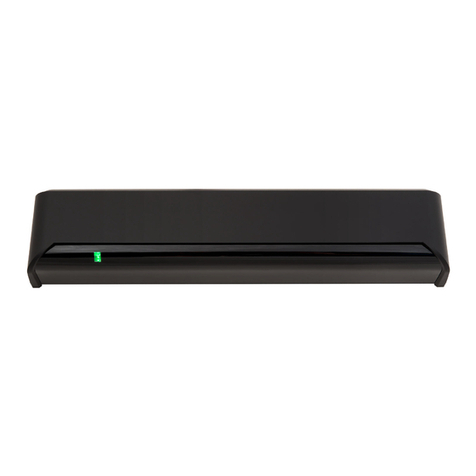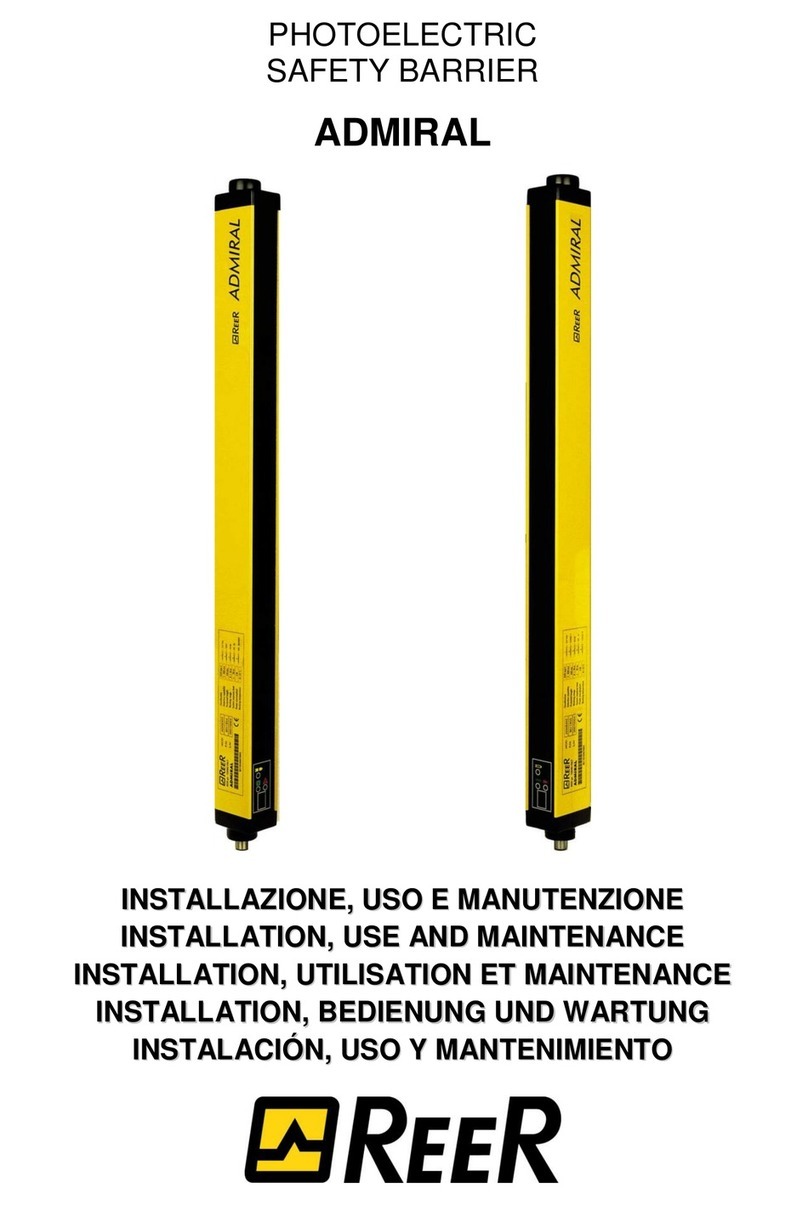sewerin Stethophon 04 User manual

Operating
Instructions
Stethophon® 04

Measurable success by Sewerin equipment
You settled on a precision instrument.
A good choice!
Our equipment stands out for guaranteed safety, optimal output and
efciency.
They correspond with the national and international guide-lines.
These operating instructions will help you to handle the instrument
quickly and competently.
Please pay close attention to our operating instructions before usage.
In case of further queries our staff is at your disposal at any time.
Yours
Hermann Sewerin GmbH
Robert-Bosch-Straße 3
33334 Gütersloh, Germany
Tel.: +49 5241 934-0
Fax: +49 5241 934-444
www.sewerin.com
info@sewerin.com
Sewerin Ltd.
8, Walsworth Road
Hitchin
Hertfordshire
SG4 9SP, UK
phone:+44 1462-634363
www.sewerin.co.uk
info@sewerin.co.uk
Sewerin USA, LLC
13551 W. 43rd Drive, Unit R
Golden, CO 80403-7272
phone:+1 303-424-3611
fax: +1 303-420-0033
www.sewerin.net
jerry.palmer@sewerin.net
SEWERIN Sarl
17, rue Ampère - BP 211
67727 HOERDT CEDEX, France
Tél. : +33 3 88 68 15 15
Fax : +33 3 88 68 11 77
www.sewerin.com
sewerin@sewerin.fr
SEWERIN IBERIA S.L.
c/ Cañada Real de Merinas, 17
Centro de Negocios „Eisenhower“
Edicio 5; Planta 2 - C
28042 Madrid, España
Tel.: +34 91 74807-57
Fax: +34 91 74807-58
www.sewerin.com
info@sewerin.es

Illustration Stethophon 04 – Setup
Headphones socket
Sensor tip
for picking up the oscillations
can be unscrewed
Microphone socket
for connecting an external micro-
phone
Display
Loudspeaker key
start/stop measuring
turn off noise
Up-arrow key
amplify volume, lter stage, values in
the basic settings
Down-arrow key
lower volume, lter stage, values in the
basic settings
Filter key
change lter stage
ON/OFF key
turning device on/off
Bar
for fastening the carrying strap

Display – Explanation of the symbols and abbreviations
Reading (current minimum level)
Volume, also: frequency range
Missing segment symbolises selected
volume or visible segments symbolise
frequency range let through
Status notication, also: menu item /
last reading / lter stage
Filter symbol
Filter stage can be changed
Loudspeaker symbol (crossed out)
Measuring ready to start
Noise stopped
Battery symbol
Current capacity of the batteries/
rechargeable batteries; the more seg-
ments are visible, the greater the avail-
able remaining capacity
Note:
All gures (except for zero) in the displays are ex-
amples. You usually get other gures when working
with the device.
Abbreviations:
Status notica-
tion/Menu item
Abbreviation for See
APF Auto Power Off Chap. 3.5
BAT Battery Chap. 3.5
END End Chap. 5
LDS Loudspeaker Chap. 5.2
MIC External microphone Chap. 4.3.2
PRO Protect (threshold value hearing protection) Chap. 5.2
RES Reset (factory settings) Chap. 5.2
SET Setup Chap. 5.1
VOL Volume (hearing protection) Chap. 5.2

Operating Instructions
30.07.2006 – 104854 – en
Stethophon® 04

Warranty & Used symbols
To ensure reliable operation and safety, it is required to pay attention to
the following notes.
Hermann Sewerin GmbH is not liable for damage caused by failure to
comply with these notes. The guarantee and liability conditions of the sales
and delivery conditions of Hermann Sewerin GmbH are not extended by
the following notes.
This product may only be taken into operation after reading thoroughly
the accompanying operating instructions.
This product may only be used for intended applications.
This product is destined for industrial and commercial applications.
Repairs may only be performed by the manufacturer or appropriately
trained staff.
The manufacturer is not liable for damage resulting from arbitrary modi-
cations of the product.
Only spare parts may be used which are approved by Hermann Sewerin
GmbH.
Only approved battery types may be used.
Technical changes within the scope of further development reserved.
Used symbols:
CAUTION!
This symbol is used to indicate dangers which may
either result in hazards for the operators or in severe
damage – or even destruction – of the product.
Note:
This symbol is used to call attention to information
and tips which may be helpful and which are exceed-
ing the basic operating procedures.

I
Contents Page
1 Intended purpose ....................................................................1
2 Safety instructions..................................................................2
3 Things worth knowing about the device...............................3
3.1 Setup.........................................................................................3
3.2 Operative ranges.......................................................................3
3.3 Factory settings.........................................................................3
3.4 Hearing noises ..........................................................................4
3.4.1 Setting the volume .................................................................5
3.4.2 Automatic hearing protector ...................................................6
3.4.3 Turn off noise .........................................................................6
3.5 Automatic switchoff ...................................................................7
3.6 Display illumination ...................................................................7
4 Measuring ................................................................................8
4.1 Turn the device on (measuring mode) ......................................8
4.2 This is the way to check ...........................................................8
4.2.2 What you need to know about the noise picked up..............10
4.2.3 What you need to know about the indicated reading ..........10
4.3 This is how you affect readout quality ..................................... 11
4.3.1 Change lter stage ...............................................................12
4.3.2 Use external microphone .....................................................14
4.3.3 Extend sensor tip .................................................................15
5 Basic settings........................................................................16
5.1 This is the way to work in the basic settings ...........................16
5.2 What can be set? ....................................................................18
6 Maintenance and care...........................................................20
6.1 Overview: ................................................................................20
6.2 Simple functional test (fault search) ........................................20
6.3 Battery or rechargeable battery change..................................21
7 Specications........................................................................22
8 Hints on Disposal..................................................................23
9 Accessories ...........................................................................24

1
1 Intended purpose
1 Intended purpose
The Stethophon 04 is an electro-acoustic listening device for
tracing leaks.
The device’s sensor tip picks up the intrinsic oscillations of the
object of investigation. Following internal oscillation strengthen-
ing, the Stethophon 04 displays a relative reading and emits the
attendant noise via the headphones.
Fields of use:
Detecting leaks in the water distribution network
Inspection of house service lines
Examination and localization of defects in compressed air
systems
Looking for defects in heating and sanitary installations in
buildings
Check on bearings in machinery

2
2 Safety instructions
2 Safety instructions
Personal risks (health hazard)
The device’s sensor tip could injure both yourself and others.
Thus make sure you handle the device properly in transport
and when measuring.
The device has an automatic hearing protection function. Even
so, only select that volume needed for noise analysis. Over-loud
noises may permanently damage your listening!
Risks for the device
Do not drop the device. Otherwise the internal microphone
might get damaged.
Never open the housing (exception: battery compartment).
Otherwise this would invalidate any guarantee claims.
Treat the device with particular care when using an extension
for the sensor tip. Mechanical loading of the extended sen-
sor tip might lead to forces arising that could ruin the internal
microphone.

3
3 Things worth knowing about the device
3 Things worth knowing about the device
3.1 Setup
Overviews with
Designation of all Stethophon 04 parts and
Explanation of the symbols/abbreviations on the display
can be found on the inside pages of the front cover
3.2 Operative ranges
The device has two operative ranges:
Measuring > see Chapter 4
Basic settings > see Chapter 5
No change is possible directly from measurement to the basic
settings. The device needs to be turned off beforehand.
3.3 Factory settings
All menu items of the basic settings are set to “0”. The lter stage
is “5”.

4
3 Things worth knowing about the device
3.4 Hearing noises
The main purpose of Stethophon 04 is hearing noises. That is
why the device is almost always used with headphones.
The point of the minimum levels shown on the display is to re-
inforce the “ndings heard”. These digital readings on their own
are not always of sufcient substance.
Note:
For effective working with the device after a short famil-
iarization period, it is in the interests of inexperienced
users to actually practise hearing (see below).
Although hearing is more important than reading the measurement
values, more attention is paid in these instructions to the display.
This is simply because the visible changes can be described more
precisely than those of the audible ones.
The volume with which the noises are picked up can be set (see
Chapter 3.4.1).
An over-loud noise posing a health risk for the user is automati-
cally turned off (see Chapter 3.4.2).
Practise hearing this way
Train your hearing, for instance, at an exposed water pipe with
tap. Learn to recognise the sound of different ows.
Listen rst to the sounds when the tap is turned off. Place the
sensor tip on the water pipe and check as described in Chap-
ter 4.
Then listen to the noise with the tap turned on. Measure at the
same measurement point as before.
Compare the two noises.
A radiator with controllable thermostat (differences between
closed/open thermostat) is another object of investigation to be
practised on.

5
3 Things worth knowing about the device
3.4.1 Setting the volume
The missing segment of the volume display symbolises the
volume chosen.
loud
low
Change volume
What to do? What happens?
Keep pressed Noise becomes louder
OR
Keep pressed Noise becomes less
Release key The chosen volume is saved
The volume can also be changed during measuring.

6
3 Things worth knowing about the device
3.4.2 Automatic hearing protector
The device is tted with an automatic hearing protector. To pro-
tect the user, a noise picked up which exceeds a certain limit is
turned off.
The limit for deploying the automatic hearing protector is laid down
in the basic settings under PRO. Deactivation of the automatic
hearing protector is possible.
This is how the automatic hearing protector functions
You check.
The current minimum level of the measurement exceeds the
limit laid down.
The noise is turned off. The crossed-out loudspeaker symbol
appears in the display.
How to hear again
Continue the measurement without any interruption. The noise
is heard again as soon as the minimum level falls below the
limit as the measurement is continued.
OR
Interrupt the measurement. Lower the volume.
3.4.3 Turn off noise
You constantly pick up noises when the headphones are put on.
To protect your hearing the noises between two measurements
can be turned off.

7
3 Things worth knowing about the device
Turn off/turn on noise
What to do? What happens? / Why? Indication
on the
display
1.
Press
Noise is turned off
Loudspeaker symbol ap-
pears
5.
Press
Noise can again be heard
Loudspeaker symbol re-
moved
Note:
Measurements are both started and ended with the
loudspeaker key. This means you have to take off
the headphones should you not want to hear any
noise during measuring.
3.5 Automatic switchoff
The Stethophon 04 turns itself off automatically
When the battery/rechargeable battery output is no
longer adequate. (BAT is briefly shown on the display).
This might also arise immediately after turning on the device!
Replace the batteries or charge the replaceable batteries (see
Chapter 6.3).
When the device has not been operated for 10 min (no key
pressed) or the display has remained constant. (APF is briey
shown on the display)
The automatic switchoff does not function with the microphone
plugged in.
3.6 Display illumination
The device automatically turns on the display illumination (20
second illumination span) when akey is pressed.

8
4 Measuring
4 Measuring
4.1 Turn the device on (measuring mode)
Turn on device (measuring mode)
What to do? What happens? / Why? Indication
on the
display
1.
Press
for some 2
seconds
Device turns itself on
2. Wait Internal query as to whether
power is from battery or
rechargeable battery
3. Battery symbol appears
Device ready to check
4.2 This is the way to check
The device is turned on (see Chapter 4.1).
Put on the headphones.
Plug the headphones into the headphone socket.
CAUTION!
You are not aware of all surrounding noises when
working with the headphones on. Thus do be ex-
tremely careful when moving in a risk-prone envi-
ronment e.g. in trafc).

9
4 Measuring
Measuring
What to do? What happens? / Why? Indication
on the
display
1.
Press
Device is prepared
for measuring
Noise turned off
2. Place sensor tip on
the object of inves-
tigation (note in-
struction below)
3.
Press
Measuring is started
Current minimum
level counts down-
wards
Noise turned on
4. Wait till the reading
has set to a con-
stant value
5.
Press
Measuring nished
Readout in the exam-
ple on the right: Mini-
mum level = 361
Noise turned off
Note the following when checking:
Press the device onto the object of investigation to ensure
contact. Avoid any damage to the object of investigation.
Keep on measuring until you get a clear impression of the
measurement point.

10
4 Measuring
4.2.2 What you need to know about the noise picked up
With the device turned on you will hear noises over the head-
phones. Irregular background noises dominate when no measur-
ing is being done (e.g. carrying around the switched-on device).
As soon as the sensor tip is placed on an object of investigation
an even hissing sound is heard. Although the noise is still even
when checking near a leak, it is considerably louder and
clearer than at an undisturbed measurement point.
You might need to practise hearing to be sure about assessing
the noises (see Chapter 3.3).
4.2.3 What you need to know about the indicated reading
The reading shown on the display during meas-
uring (here: 859) expresses the current mini-
mum value of the noise intensity. Values above
the minimum value are not shown.
On conclusion of a measurement, the device
shows the minimum value across the whole
measurement (here: 361).
The minimum level established is a relative value which is only
of signicance when compared with the readings of other meas-
urement points.
Assessing two measurements one after the other is helped by
always contrasting the current reading with the minimum value
of the previous one (here: 007).

11
4 Measuring
4.3 This is how you affect readout quality
Various factors can affect the quality of a measurement.
Preferably only check when the number and intensity of back-
ground noises (e.g. opened water pipes, vibrating machinery,
talking) is low.
Test whether choosing a different lter stage produces a
more explicit nding (see Chapter 4.3.1).
Keep the device still when measuring. Otherwise the read-
ings will not be true.
Use an external microphone that does not need to be held
(see Chapter 4.3.2), if needed or extend the sensor tip to
make it easier to get to the object of investigation (see Chap-
ter 4.3.3).
Never check just once.
Firstly familiarise yourself with the acoustic surroundings by
carrying out a number of test measurements.
Repeat the actual check at a number of points around the sus-
pected leak. In this way you will obtain a series of signicant
measurements.

12
4 Measuring
4.3.1 Changelterstage
The device can operate with eight different lter stages. The
choice of lter stage affects the individual perception of noise.
Each filter stage specifically emphasises certain noise
constituents.
Suitabilityofthelterstages
Filter
stage
Frequency Noise Select for
1low dull Large pipe diameters
Plastic tubes
Floors
.
.
.
.
.
.Small pipe diameters
Metallic pipes
8high clear
The lter stages also let through frequency ranges of differing
widths.
Frequencyrangewidthinthelterstages
Filter
stage
low <Frequency > high
1
2
3
4
5
6
7
8

13
4 Measuring
Note:
The lter stage affects internal-device calculation of
the minimum level. Therefore only compare readings
from one and the same lter stage.
Change lter stage
What to do? What happens? / Why? Indication
on the dis-
play
1.
Press
Filter symbol appears
Current lter stage ashes
Thefrequencyrangeisshown
instead of the volume
2. Press Filter stage is raised
OR
Press Filter stage is lowered
3.
Press
New lter stage is taken
over
Filter symbol is removed
Volume can be seen
again
The last lter stage used is saved on switching off and replacing
battery/rechargeable battery.
Other manuals for Stethophon 04
1
Table of contents
Other sewerin Security Sensor manuals
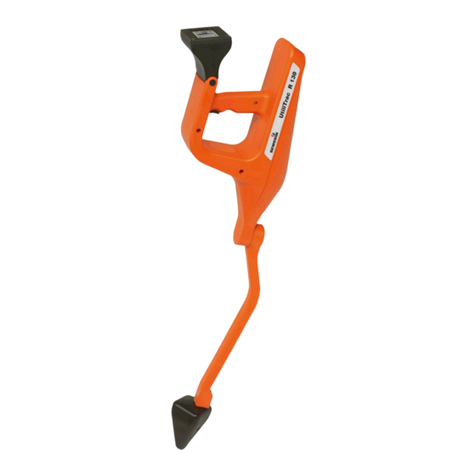
sewerin
sewerin UtiliTrac User manual

sewerin
sewerin UtiliTrac User manual

sewerin
sewerin FerroTec FT 10 User manual

sewerin
sewerin Aquaphon A 100 User manual

sewerin
sewerin Duophon User manual
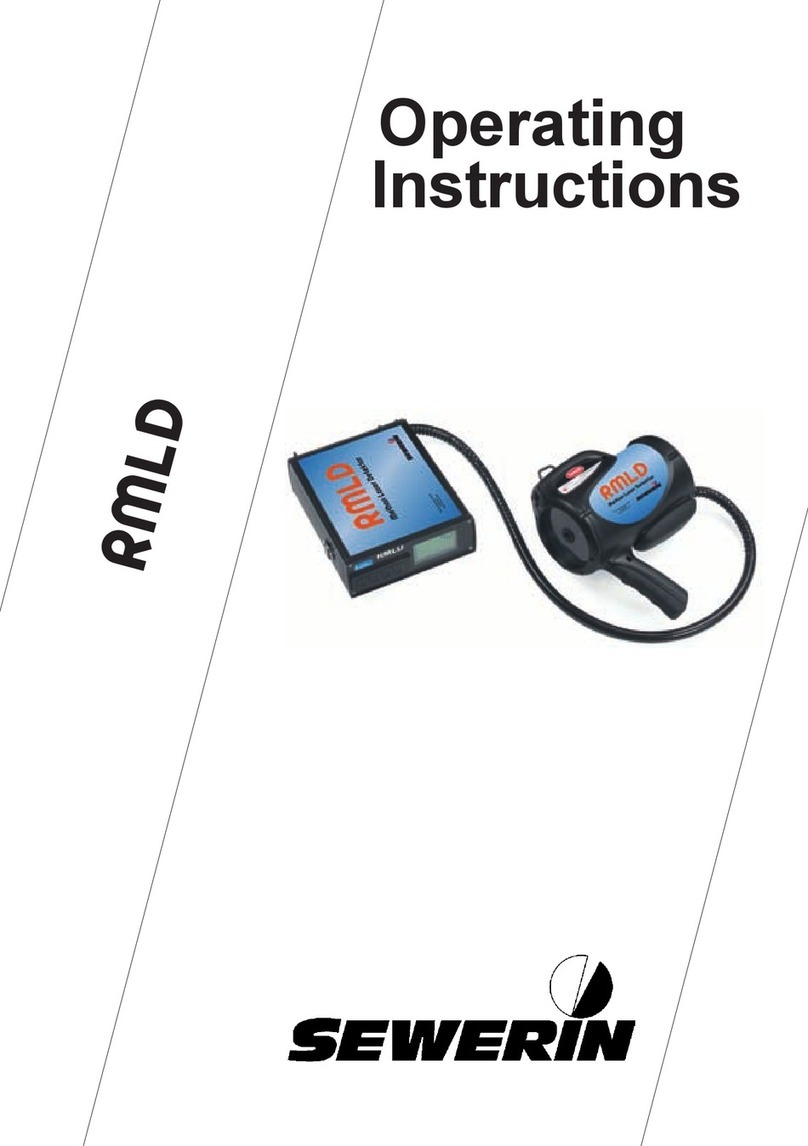
sewerin
sewerin rmld User manual
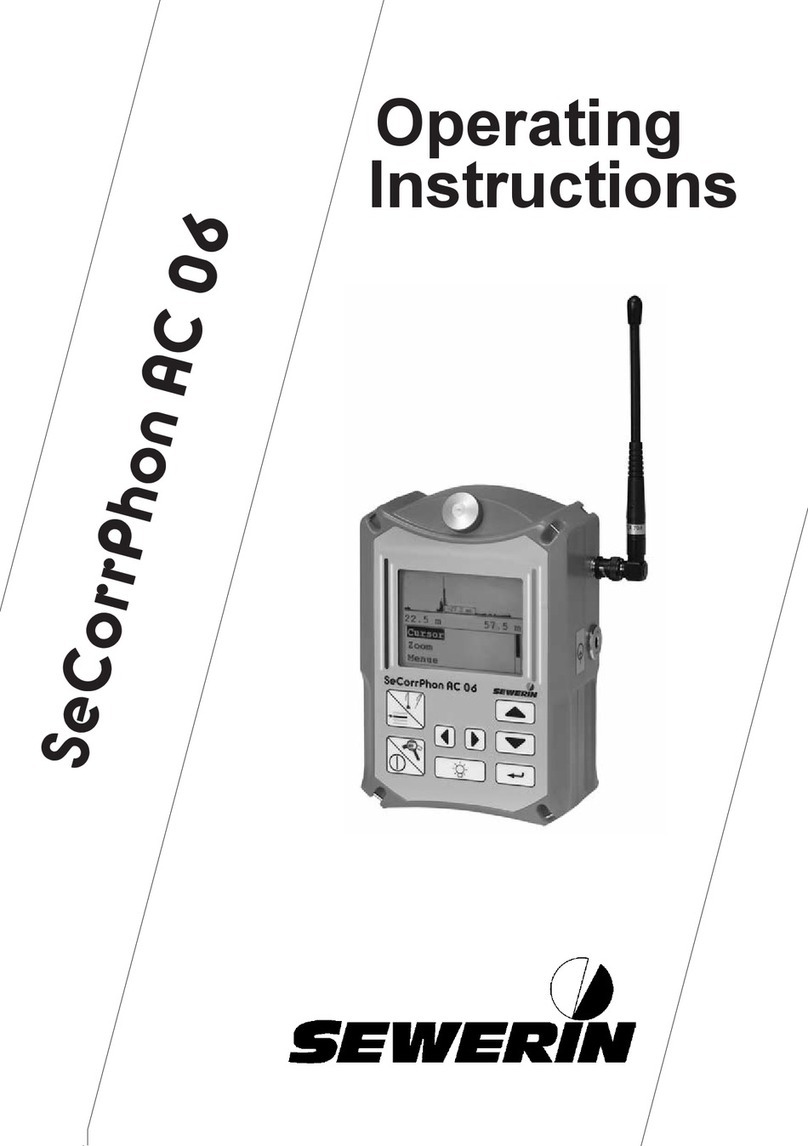
sewerin
sewerin SeCorrPhon AC 06 User manual
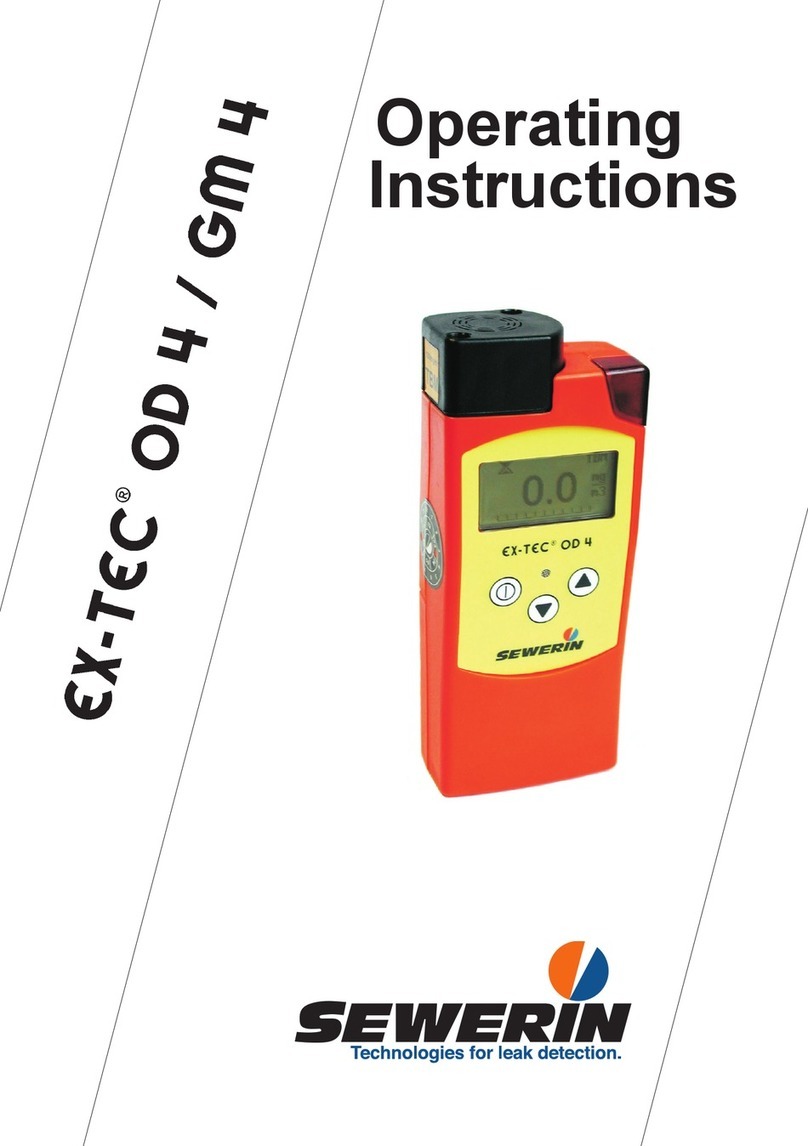
sewerin
sewerin Ex-Tec OD 4 User manual
